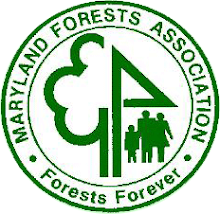The temperature is well below freezing and the wind is howling; but the snow flurries are glittering in the sun.
In this edition:
· Virginia’s Big Woodland Transfer by Adam Downing and Mike Santucci
Virginia is poised to see one of the greatest shifts in forestland ownership since the Kings’ Grants of yore. A combination of factors have been in play over the last few centuries culminating in an aging Boomer generation that now owns the majority of Virginia’s woodland. With relative affluence and affordable land, boomers have acquired farm and forestland over the years, and are now poised to pass much of that land on to the next generation of owners. Read more…
· Tomorrow Woods Program Part I: Land Conservation by Rob Suydam
Virginia has established itself as a leader in land conservation by being one of only three states nationwide that has transferable state income tax credits as incentives for landowners who are interested in protecting their land from development. This state tax incentive, along with federal tax benefits, has generated a great deal of interest in land conservation, particularly conservation easements, resulting in the protection of over 170,000 acres of land in just the last two years. Read more…
· You Ain’t From Around Here! Exotic Invasive of the Quarter: Asian Lady Beetle by Jennifer Gagnon
In the Winter 2007 edition of the Virginia Forest Landowner Update, I featured the hemlock woolly adelgid (HWA) in “You Ain’t From Around Here!” In this article, I touted the on-going research to control HWA by releasing ladybird beetles (aka ladybugs, lady beetles), which are adelgid predators. Little did I know that the publication of this article would result in my phone ringing off the hook for weeks. Virginians were outraged that researchers had intentionally released these critters. One caller claimed she swept up buckets of ladybugs from her walkway every day in the fall. Read more…
· Establishing a Riparian Forest Buffer on the Bluestone River by David Richert
· Although many landowners associate tree planting with the springtime flush of growth, the late fall dormant season is also a biologically appropriate season for tree planting. Some landowners who are faced with a lengthy springtime to-do list may actually prefer planting trees in late fall because of logistics or the availability of volunteer labor. This was the case for Tazewell County landowner Lloyd Evans, who completed a tree-planting project on his farm near Bluefield, Virginia during the week of Thanksgiving. Read more…
Upcoming events:
- · Sustainable Timber Harvesting & Marketing February 6, Gloucester
- · Forest Landowner Association Workshop: How to Increase Forest Productivity and Profits February 9, Charlottesville
- · Timber Tax for Owners & Managers February 26, Harrisonburg
- · Cruisin’ Through the Woods Part I – Timber Volume Estimation March 12, Ottobine
- · Crusin’ Through the Woods Part II – GPS Navigation March 19, Ottobine
In addition:
SHARP Logger Program’s FREE on-line classes for landowners, natural resource professionals and loggers:
o Protecting Water Quality with Best Management Practices in Virginia
o Laws Affecting Water Quality and Forestry Operations in Virginia
These 30-minute training presentations qualify for 0.5 SAF Category 1 CFE Credits each. Stay tuned for MANY more on-line topics in the coming year.
· The Virginia Forest Landowner Update website has been updated – visit www.cnr.vt.edu/forestupdate for publications, links, events, short course and field tour information, and more!
· The Virginia Forest Landowner Education Program is on Facebook. Become a fan by visiting www.facebook.com and searching for Virginia Forest Landowner Education. Read news articles, post comments, view field tour photos, and share your photos, videos and forest stories.




No comments:
Post a Comment